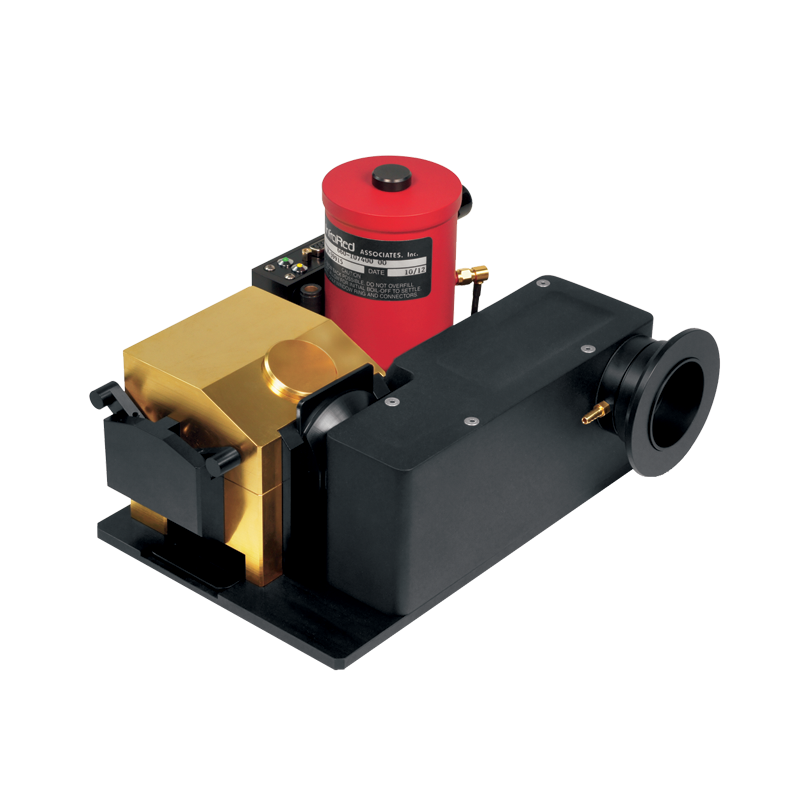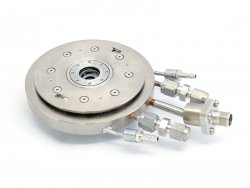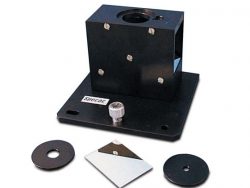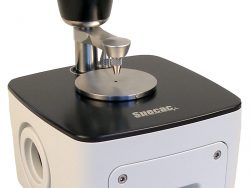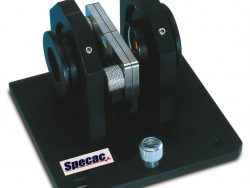Description
Pike Technologies Mid-IR IntegratIR™
The integrating sphere is very often an accessory of choice when studying reflectance properties of solids, analyzing light scattering and/or highly absorbing samples and collecting spectra difficult to obtain with standard sampling techniques. These Mid-IR integrating spheres are designed for research and standard applications that require high sensitivity and ability to collect high quality data from difficult to analyze samples.
The PIKE IntegratIR spheres are available in the upward and downward looking configurations and are suitable for the measurements of absolute and relative diffuse reflectance of solids, powders and opaque liquids. Both feature 3 inch diameter highly reflective gold-coated integrating spheres. The accessories mount in the sample compartment of the FTIR spectrometer, but use a dedicated detector for maximum performance.
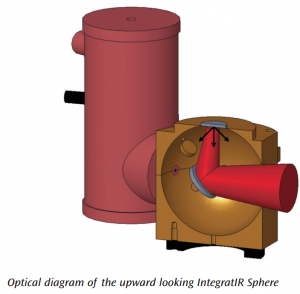 The upward looking Mid-IR sphere features a 12 degree illumination of the sample, and offers a specular exclusion port. Reflectance samples are placed directly onto the sample port located on the top portion of the sphere. This sphere is ideal for large and/or thick solid samples. For powder samples, a standard ZnSe window is available. If preferred, a KBr window can also be used with the sample plate to minimize the reflection loss compared to the ZnSe.
The upward looking Mid-IR sphere features a 12 degree illumination of the sample, and offers a specular exclusion port. Reflectance samples are placed directly onto the sample port located on the top portion of the sphere. This sphere is ideal for large and/or thick solid samples. For powder samples, a standard ZnSe window is available. If preferred, a KBr window can also be used with the sample plate to minimize the reflection loss compared to the ZnSe.
The downward looking Mid-IR IntegratIR allows the sample to be placed underneath the sphere. This configuration is desirable for measurements of powders and particulate materials because an incidence beam strikes the sample directly, without passing through an IR transparent window. A specular exclusion port is a standard feature on this accessory.
For all spheres, the selection of light illumination onto the sample or onto the reference surface is done via a flipper mirror. This allows the background to be collected using either the substitution method or the Taylor method.
Diffuse transmittance of partially transmitting materials can be measured with either sphere. This is done by placing the sample on a standard 2″ x 3″ sample holder and siding it in the mount located in front of the transmission port.
A selection of Mercury cadmium telluride (MCT) or deuterated triglycine sulfate (DTGS) detectors is offered with the IntegratIR spheres. This allows the accessory to be optimized for the application and sample type. The wide band MCT is the commonly configured detector while the less sensitive DTGS is an option for users who require the convenience of a room temperature detector. The accessory comes with built-in detector electronics and can be interfaced to most FTIR spectrometers.
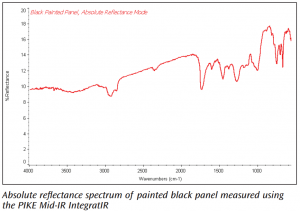
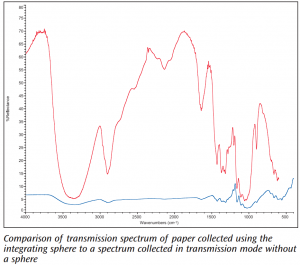
- 3 inch sphere – gold-coated, Lambertian scatterer for high-performance measurements
- 12 degree hemispherical diffuse reflectance measurement with specular exclusion port
- Diffuse transmission station for measurement of highly scattering samples in transmission mode
- Integrated, high-performance detector MCT or DTGS choice for ultimate configurability
- Upward and downward-looking optical configurations to accommodate a wide range of sample sizes and types
- In-sample compartment design to minimize laboratory space requirements
- Configurations available for most FTIR spectrometers

